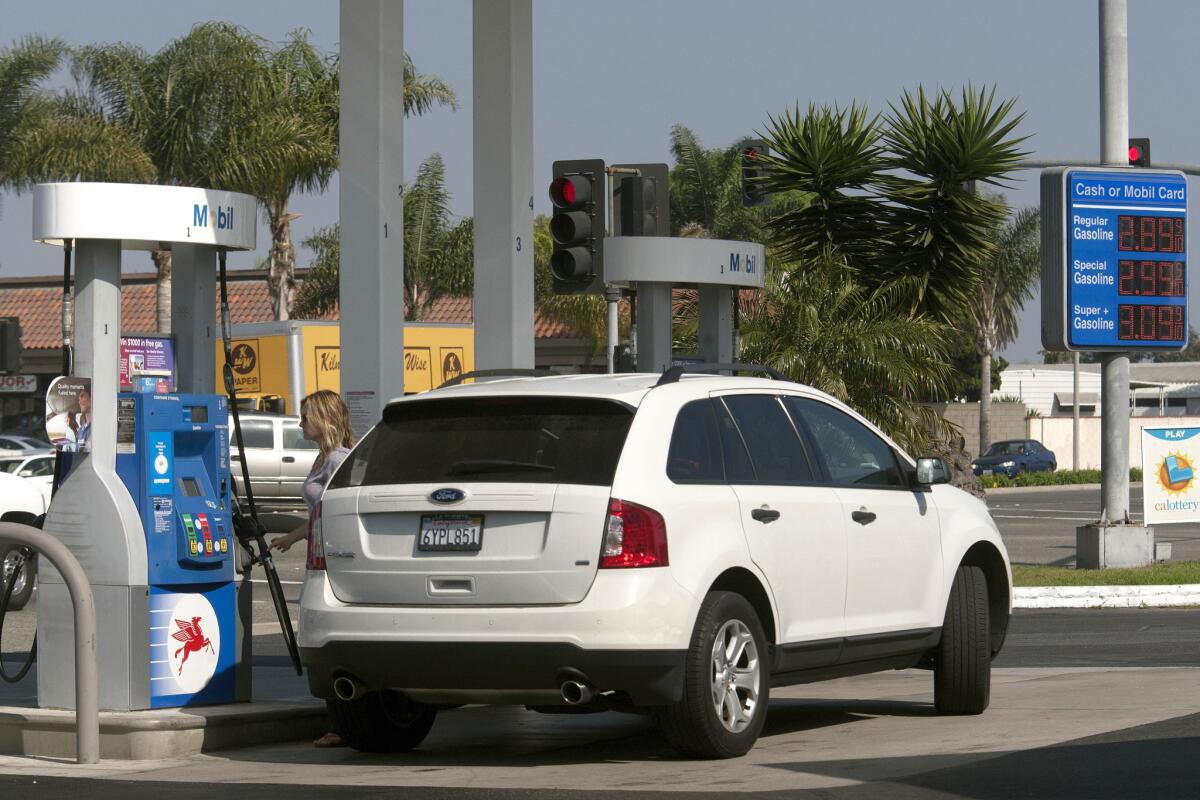Q&A: U.S. technically hits deflation, but what does it mean?

The consumer price index, a leading measure of inflation, fell last month into negative territory over a 12-month period for the first time since the fall of 2009, when the nation was just emerging from recession. It also fell from December, the third straight month-to-month decline.
Of course inflation affects people’s spending and finances, but the trend has repercussions for interest-rate policy and the broader economy. Here are some things to consider about the latest inflation reading Thursday from the government:
What caused the consumer price index to fall in January?
The CPI sank 0.7% in January from December, and the annual rate of inflation fell 0.1%, technically putting the economy into deflation. The Bureau of Labor Statistics said the decline was driven “overwhelmingly” by gasoline prices, which plunged 18.7% in January from December.
The price of cars dropped last month from December, as did consumer costs for commodities such as tobacco. Airline fares also drifted lower. Prices of most other goods and services, including rents and medical care, rose over the month.
What did economists have to say about the January inflation report?
The main CPI numbers came in right about where analysts had expected, so there was no surprise to investors. So-called core inflation, which excludes the volatile categories of energy and food, was a bit stronger and more encouraging.
The core CPI rose 0.2% in January from December, and its value on an annual basis was up 1.6%. Analysts and officials consider core inflation measures more important for gauging longer-run trends because food and gasoline prices can have big, often-transitory swings.
What is the outlook for inflation?
Oil prices have stabilized since they started to plunge last summer. In fact, consumers today are paying about 30 cents a gallon more at the pumps than a month ago, suggesting that the worst of the CPI drop is over.
Inflation is likely to remain subdued for some time, but with oil prices expected to creep even higher in the second half of this year, the CPI also should make a gradual rebound in coming months.
Few analysts are worried about deflation, a condition of broadly falling prices, partly because they view the recent slump in energy prices as a temporary phenomenon. Also, prices for other major CPI items are likely to rise at a solid pace as demand increases and, significantly, as workers’ wages show signs of climbing higher with a tightening labor market.
Why is deflation or super-low inflation bad?
While falling prices may seem like a good thing for consumers, deflation can wreak havoc on an economy, as Japan’s long economic malaise has shown. That’s because deflation tends to discourage consumers from spending as they wait for still lower prices, and that puts downward pressure on company profits and worker wages.
Very low inflation raises the risk of deflation. In addition, ultra-low inflation can be problematic in an environment such as today’s when the Federal Reserve’s benchmark interest rate is at rock bottom. Policymakers want interest rates to be below inflation; otherwise borrowers have less incentive to borrow.
So what does this mean for Fed interest rate policies?
After years of holding its key interest rate at near zero, the central bank is now weighing when to start a rate hike. It could be as early as June, but Fed officials are carefully looking at a number of economic indicators, especially concerning the job market and inflation.
The Fed’s inflation target is 2%, and before officials make a move, Fed Chairwoman Janet L. Yellen said this week that she wants to be confident that inflation was moving toward that target over the medium term.
The latest CPI report isn’t likely to sway the Fed more one way or the other, but policymakers will want to wait and see more data before beginning to raise rates.







